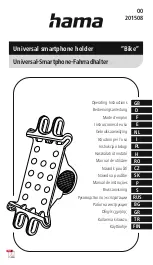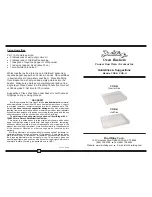
74
D-302756
Zone
# 1 2 3 4 5 6 7 8 9 10 11
12 13 14 15 16 17 18 19 20 21 22 23 24 25 26
27 28 29
1
st
digit
A A A A A A A A A A A A A A A B B B B B B B B B B B B B B
2
nd
digit
1 2 3 4 5 6 7 8 9 A B C D E F 1 2 3 4 5 6 7 8 9 A B C D E
Panic / 24 Hours - 8 users
User No.
1 2 3 4 5 6 7 8
Panic
CP
Duress
1
st
digit
2 2 2 2 2 2 2 2
2
2
2
nd
digit
1 2 3 4 5 6 7 8
9
A
Arm HOME
and AWAY (Closing)
User No.
1 2 3 4 5 6 7 8
Cancel
alarm
Recent
Close
1
st
digit
E E E E E E E E
E
E
2
nd
digit
1 2 3 4 5 6 7 8
9
C
Disarm (Opening)
User No.
1 2 3 4 5 6 7 8
1
st
digit
F F F F F F F F
2
nd
digit
1 2 3 4 5 6 7 8
Trouble
Event
Fuse
Fail
Fuse
Restore
Jamming Jamming
Restore
AC
Failure
AC
Restore
CPU Low
Battery
CPU Low
Battery Restore
CP
Tamper
1
st
digit
2
2 2 2 1 1 1
1
1
2
nd
digit
C
D E F 1 2 3
4
6
Event
CP Tamper
Restore
No Active
COMM. &
LINE Restore
Enter Test
Exit Test
Auto Test
1
st
digit
1 1 1 1
1
1
2
nd
digit
7 8 A D
E
F
B4. Understanding the Scancom Reporting Protocol Data Format
The SCANCOM data format consists of 13 decimal digits divided
into 4 groups, from left to right, as shown at the right side.
Each channel is associated with a specific event as follows:
1
st
"C":
Fire
5
th
"C":
Alarm cancel
2
nd
"C":
Personal attack
6
th
"C":
Emergency
3
rd
"C":
Intruder
7
th
"C":
Second alarm
4
th
"C":
Open/close
8
th
"C":
Trouble messages
aaaa cccc cccc s
Account
Code
Channels
1 - 4
Channels
5 - 8
System Status:
no trouble,
test, low battery
The digit in this position conveys
the status of channel 1
The digit in this position conveys
the status of channel 8
Scancom Data Format
APPENDIX C. Glossary
This list of terms is arranged in alphabetical order. Any
term indicated by cursive (italic) letters within the
explanatory text can be looked up separately.
Abort Period:
When an alarm is initiated, the internal
sounder is activated first for a limited period of time which
is the abort period set by the installer. If you cause an
alarm accidentally, you can disarm the system within the
abort period before the real sirens start and before the
alarm is reported to the
remote responders.
Alarm:
There are 2 kinds of alarm:
Loud alarm - both internal and external sirens blare out
constantly and the control panel reports the event by
telephone.
Silent alarm - the sirens remain silent, but the control panel
reports the event by telephone.
A state of alarm is caused by:
•
Motion detected by a
motion detector
•
Change of state detected by a
magnetic contact
detector
- a closed window or door is opened
•
Detection of smoke by a
smoke detector
•
Tampering
with any one of the detectors
•
Pressing the two emergency buttons simultaneously
(panic)
Arming:
Arming the alarm system is an action that
prepares it to sound an alarm if a zone is “violated” by
motion or by opening a door or window, as the case may
be. The control panel may be armed in various modes
(see
AWAY
,
HOME, INSTANT
and
LATCHKEY
).
Assigned:
Refers to zones.
Associated:
Refers to devices.
AWAY:
This type of arming is used when the protected
site is vacated entirely. All zones,
interior
and
perimeter
alike, are protected.
Chime Zones:
Allow you to keep track of activity in the
protected area while the alarm system is in the disarmed
state. Whenever a chime zone is "opened", the buzzer
beeps twice. The buzzer doesn't beep, however, upon
closing the zone (return to normal). Residences can use
this feature to annunciate visitors or look after children.
Businesses can use it to signal when customers enter the
premises or when personnel enter restricted areas.
Note:
Your installer will never designate a 24-hour zone or
a fire zone as a chime zone, because both zone types
actuate an alarm if disturbed while the system is in the
disarmed state.
Although one zone or more are designated as chime




































